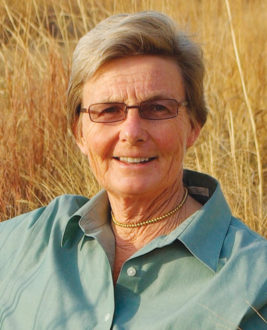Kansas rancher Jane Koger, who raises 125 head annually in a cow/calf herd, is trying an ambitious new strategy to protect the rare prairie ecosystem on her ranch. The resulting "patch burning" system she developed with conservation organizations, along with help from a SARE grant and her Natural Resources Conservation Service (NRCS) field office, seems a promising practice to maintain the health of her 4,000 acres of tallgrass prairie and its diverse native species.
Like her ranching neighbors, Koger used to burn her entire acreage of prairie yearly to improve its nutritional value for cattle. Yet full-scale burning destroyed habitat for species like the rapidly declining greater prairie chicken, as well as native plants.
Koger learned about a patch-burning project in Oklahoma that featured burning one-third of the property each year, with a repeat cycle during the following three years.
Data from Oklahoma State University showed that yearling cattle will gain as well under patch burning as with annual burns.
Koger also rents land to two other ranchers, who raised 550 head of yearlings and 60 head of cows in the experimentally burned pastures. "We know we can produce Big Macs, but we're losing some of our bird species," she said. "This is a better way to protect them."
The fires mimic historic patterns in nature. They also control the movement of the livestock, which migrate to the burned area a few days after the fire is out. The new growth is more palatable than older grasses, said Koger, who saw her cattle spend 80 percent of their time in a just-burned patch. Moreover, patch burning leaves two years of old-growth grass, creating more fuel for a hotter burn in the next cycle, which clears out invasive species.
More and more farmers and researchers are experimenting with patch burning. At South Dakota State University, for example, SARE-funded researchers are exploring the technique to better balance ranching with habitat diversity.
Koger understands that ecological considerations alone are not likely to be sufficient motivation for change among traditional ranchers. However, she says, "We do have high hopes that others might be willing to consider a proven double-bottom-line approach that allows them to do good for the environment while continuing to do well in the cattle business."
View Related SARE Grant:
- Homestead Range Renewal Initiative (FNC04-496)

